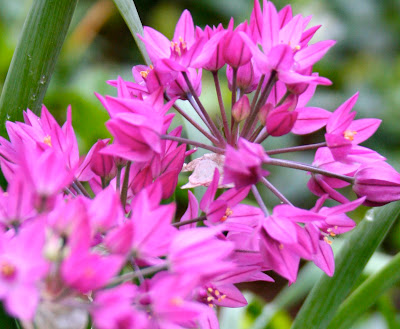Last year, I complained about the garden's late summer white out. A pale monochrome palette made everything look tired, tattered, and washed out: a dog day garden for the dog days of summer.
This year, as is my nature, I over planned--but under implemented--a response. In the spring, I gathered images of plants and palettes on a Pinterest board. My scheme was to use peach, coral, and burgundy dahlias as the center of the color wheel. Yellow, blue, and (yes, even) white would spoke out from this hub. Maybe a dash of pink or purple would sweetened up the mix.
The dahlia part went just fine. September has "Arabian Night," "Rose Toscano," "Normandy Painted Pearl," and "Pattycake" tossing out sprays of blossoms. The shades spanned a neat band of the color spectrum, and the scale and structure of the flowers complemented each other.

Some spiky interest was added by a fat patch of purple and white angelonia.
But then hoards of hungry rabbits entered the picture. They liked yellow plants: Coreopsis verticillata "Zagreb" and lemony marigolds were devoured down to the dirt. Only marguerite daisies and goldenrod Solidago x "Little Lemon" survived the lapine predations.
Achillea "Pink
Grapefruit"--that touch of sugar--settled in happily. By late summer,though, most of the flowerheads have browned out and the lacy leaves are battling the combined outslaught of rabbits and dry soil. I'm just hoping that these tough little sweethearts are putting down deep roots for next year.
Less successful has been a row of pink Henry I asters, which I dug in to fill the gap between the achillea and a bank of daylilies. The rabbits didn't even bother to say thanks for this aster treat before chowing down. I will have to extract that sedum "Autumn Joy"from behind the compost pile, separate into several small clumps, and insert them in this denuded space come next spring. Can't wait to rescue this old friend from its exile.















